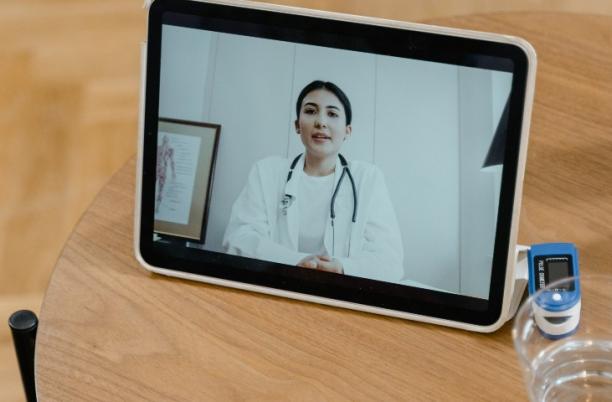
Virtual clinics

How Trinity Hospice, Blackpool uses video technology to run virtual clinics.
Title
About this innovation example
Project and outcomes
Project overview
Trinity Hospice, Blackpool works closely with local community hospitals, providing clinical support for patients with palliative and end of life care needs. Visiting patients in the community hospitals was taking up a lot of time for hospice staff, partly because they were being asked to see extra patients during their visits and partly because of travel. In peak Blackpool holiday traffic, it could take up to two hours to drive to and from Clifton community hospital.
To solve this problem, the hospice began carrying out virtual clinics.
Each virtual clinic takes place at a set time. The hospice’s clinical team speak to hospital patients and staff via video call, monitoring each individual’s progress and agreeing what care they need. The hospital uses a tablet device for the video calls, which staff carry to each patient. They also help them to hold and operate it during their consultation.
Outcomes
The virtual clinics are saving time and money. By carrying out a virtual clinic for one hour every week at Clifton community hospital, the hospice made a cost saving of £21,000 over 12 months. The hospice has also rolled out virtual clinics to two local nursing homes.
Being able to provide a remote service means that patients who are nearing the end of their lives do not always need to be brought to the hospice for in-patient care, if this is not their wish.
Facilitators, challenges and advice
Key facilitators
The team collected data to demonstrate the time and cost savings associated with the virtual consultations. This has helped convince colleagues to get involved in the programme.
Challenges
During the acute phase of the COVID-19 pandemic, the wards at Clifton community hospital were repurposed as COVID wards and many staff left both the hospice and the hospital. The hospice lost some key relationships and staff were not trained to take part in the virtual service. This meant that the virtual consultation programme was paused.
Some staff were very reluctant to deliver a virtual service, as they felt that hospice care should be face-to-face. However the positive feedback from patients and families, as well as the data on cost and time savings, has helped change their mind.
Tips and advice
Do not make assumptions about how people want to have contact with the hospice. Ask them how they want to keep in touch and offer them a range of options, including virtual and face-to-face.
Find ‘champions’ who are enthusiastic about virtual services. They will support you and filter information out to colleagues, showing how the services work.
Always have the data to back up your service. You can’t argue with data!
Future development
The hospice is now looking at the best way to utilise virtual services following the pandemic. This includes relaunching the virtual clinic and trialling virtual wards to support patients at home, and online options for the ‘Living Well’ clinic.
Going forwards, everything the hospice does will involve a virtual element. This will give patients and carers a choice about how and where they receive care, and save time and money for the hospice.

